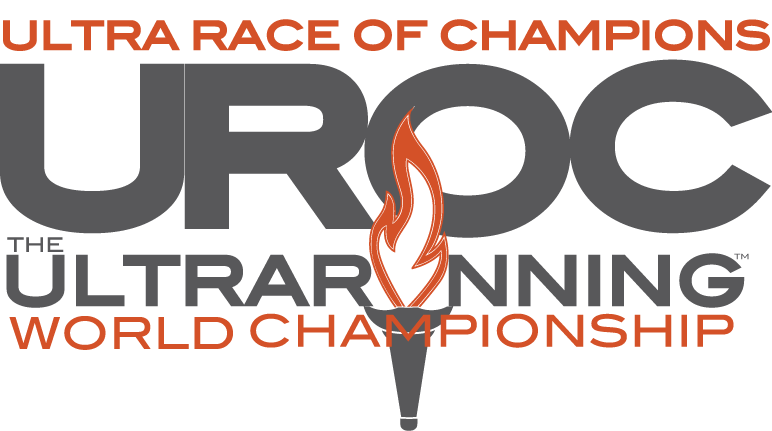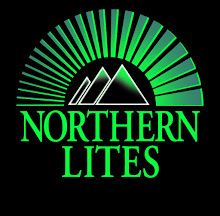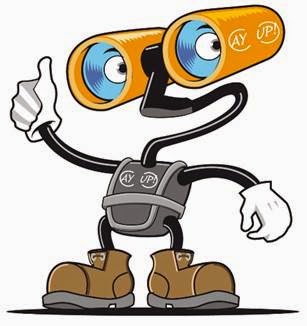"Trav. Trav, get up. TRAV!"
The distant, Aussie accent sound vaguely familiar, but when I opened my eyes, read 4:21 a.m. on my watch, saw a cloudy but sun-brightened sky, touched a helmet on my head that had probably been used as a pillow, brushed a coat of snow off my sleeping bag, and felt the cold pavement on which I had been slumbering so deeply, I was in a thick fog of confusion.
I’ve never been in a war, but my guess is that the fog of adventure racing is about as close to the fog of war that you can get without actually being shot at.
Momentary panic due to my unknown time and place shifted to a calm but overwhelming confusion. Why was it light out at 4:21 a.m.? How come my head hurt so bad? Why were my feet throbbing? How did my mouth get so raw, and why were my lips covered with sores? Did I really have blisters on my ass? It sure felt like I did. Why was I starting to shiver uncontrollably? Was I really this hungry? Unbelievable!
“Trav! Get the hell up!”
Darren’s harsh but matter-of-fact tone snapped me back to reality.
The hustled gear scramble of my teammates, Darren, Paul, and Karen, reminded me that we had been sleeping in a parking lot that served as a remote checkpoint in northern Sweden for the Explore Sweden Adventure Race. Adventure races involve the core disciplines of running/trekking, mountain biking, fixed ropes (rappel, tyrolean traverse, and more), paddling (kayaks, rafts, canoes, etc.), and navigation with map and compass. Whereas a triathlon involves set distances for each sport that are consistent from race to race, adventure races throw together disciplines in a helter-skelter format that matches with the land and local culture. In addition to the core sports above, adventure races also include, from time to time, region-specific events like horseback riding, camel trekking, rock climbing, zip-lining, mountaineering, skiing, and the “princess chair” (a Chinese event in which three teammates carry the fourth in a bamboo chair with long handles that looks like something from a Disney movie). It’s a team sport, and most races involve coed teams of four racing non-stop for a week or so for an “expedition race” or in stages that involve 8 to 12 hours of racing each day with a bit of rest in a tent overnight for a “stage race.”
Explore Sweden 2005 was my first real expedition race, and I was a green 22-year-old on a team of gritty, experienced athletes who were racing for the podium against the best teams from Sweden, France, New Zealand, Australia, America, Norway, Russia, Poland, and elsewhere. If I hadn’t been ready to shit my pants at the the starting line, I sure was now as the enormity of what we had done--and still had to do to get to the finish--set in while I began gathering up gear for trekking, winter mountaineering, snowshoeing, skiing, and rock climbing. All of this would be somehow transported on an my bike for a 40-mile ride to the start of the mixed winter sports segment.
Stumbling through gear in a hazy stupor, I recalled our journey over the past three days and nearly-sleepless nights.
During the first paddling section, our two-person sea kayak flipped over in a large, fast, ice-lined river. After a dreadful swim in cold, fast whitewater, we somehow righted it and continued forward. The long, narrow lake at the end of the river was covered with ice. Thin ice. As we forged on, kayaks in tow, to the transition area at the end of the lake, we repeatedly broke through the ice and had to use the ice picks that were part of the mandatory gear to pull ourselves out of the water. Thankfully, we wore personal flotation devices and wetsuits, but it was still cold. Very cold, especially under the ice. After a mile or so of that break through / climb out / pull the boats further dance, we reached a transition area. There we stripped naked in the snowy air, put on cycling clothes, built up our bikes from the pieces that were packed into boxes for transportation to the remote location, and rode out into the swamp where, hours later, we would have to urinate on our frozen bikes to make the chains spin again.
That was the first half of the first day.
We later navigated on foot through an endless orienteering section in a swamp with thin ice (fragile enough to break through, solid enough to cut the shins) just above cold, knee-deep water.
Nights involved extended daylight at the high latitude, an hour or so of sleep on the side of the trail before we woke up shivering, and plenty of hallucinating (I’ll never forget the entire Team Montrail jumping out of the woods to chase us down in one of those visions).
One portage--that’s when you still have kayaks but there’s no water, so they must be carried or rolled on carts--spanned almost 20 miles of pavement.
The race had been brutally cold, with plenty of snow and rain, and some of the top teams like Team Nike, hands-down the best team in the world, had dropped due to illness, injury, and the simple fact that a lot of this was not very fun.
I was exhausted, sleep-deprived, and completely wrecked from head to toe when I stumbled into a bathroom, looked in a mirror, and received a horrifying shock.
My eyes were bloodshot, my face was puffy and red, and blisters lined my lips. My matted hair resembled something from a woolly mammoth sample at the museum, and I looked like a druggie after a binge. Many zombies from the movies from the movies are much more attractive than I was at that moment. I felt worse than I looked, and I was pretty sure that I wasn’t material for a few more days of racing through the frozen north.
Looking at myself in the mirror, contemplating a peaceful end to the race, then and there, that would have me in a warm hotel room in an hour, I realized this really was the moment of truth. Would I listen to my body, brain, and feelings, which all sent a resounding message that quitting the race was clearly the path to take, or would I pursue the dream of finishing my first expedition adventure race and, eventually, becoming one of the best in the world at the sport?
Evergreen, 1989.
“It’s LeMond! It’s Henault! It’s LeMond! It’s Henault! LeMond makes his move, he pulls away, it’s LeMond! LeMond takes it on the line!”
To my five-year-old ears, rattling on along a washboard road amongst the lodgepole pine in the mountain town of Evergreen, Colorado, Dad sounded just like the infamous Tour de France commentator, Phil Liggett. If you think Liggett is enthusiastic and inspirational in calling a cycling race—and for those who haven’t heard him, he really is second in passion to only those crazy Spanish soccer callers—you should have heard Dad cheering me on.
I was LeMond. Greg, that is, winner of the 1986, 1989, and 1990 Tours de France, and, thankfully, a clean and legitimate professional rider. I had just edged out Bernard Hinault, in reality LeMond’s teammate and primary competitor. He was the guy we rooted against when watching Le Tour on one of our four TV channels, and he was played out on the dirt road by Dad.
Earlier in the ride, during the part that was supposedly fun but mostly just filled with the physical pain that was already grooming my body and mind, Dad rode just behind me as I struggled up a steep hill. We biked through our neighborhood, which consisted of houses speckled in the woods along a network of dirt roads built according to topography. Not a block grid or paved road in sight. TV came in for all of the houses through a lone, four-foot antenna atop the mountain behind the neighborhood. Limited phone lines meant multiple houses shared a “party line.” I figured everyone lived in a place like this, that kids all around the world were also out “hammering the hills.”
We passed the point where Jefferson County stops maintaining a road. Evergreen actually isn’t even an official town, just “unincorporated Jeffco,” as they say in the fire warnings. E-town has changed over the last 25 years, but, thankfully, we still don’t have a mayor.
The road kicked up and got even rockier. I grunted. Well, probably squeaked—I was five. A burro inside the barb wire corral on the hillside brayed. My rear tire spun in the loose stuff, but I gained traction and continued. Just as I was about to put a foot down, Dad tucked in next to me and just behind, his calm voice presenting what would become the central curriculum of my upbringing. “You can do it, Bud. Keep hammering, Bud. Don’t stop on the climb, Bud. Hammer the hills, Bud. Commit to it, Bud. It’s all good mental training, Bud.” I made it to the top of a hill that had looked impossible. Dad believed in me, and that made me believe in myself.
My mental training had begun.
A few weeks later, my next big lesson took place in America’s highest incorporated town (yes, they have a mayor, and in 1988 he was probably the kind of guy who wore a cowboy hat and carried a gun), Leadville, Colorado. Dad, who had never run more than a marathon, signed up for, committed to, and finished the Leadville Trail 100 Run. I was there, and I watched it unfold.
I’ll never forget crossing the finish line with Dad for the first time in Leadville. His broken body, like those of other Leadville finishers then and now, somehow continued to surge forward, even though it clearly should not be moving anymore. In the background, the Rockie Mountains, including the race’s high point on Hope Pass at 12,600 feet loomed. His gaze, coming up 6th Street dangerously close to the 10:00 a.m. cutoff after 30 hours of racing, was fixed on the finish banner. His eyes were bloodshot and sleep-deprived, yet somehow full of life and energy. Exhausted beyond comprehension, he could hardly speak but managed a sincere smile for his children when we ran out to hold his hand while he shuffled the final 20 meters of red carpet to the finish. The course crushed him, and he finished, literally, dead last. His hamstrings were shredded and his feet were broken.
This was all good mental training, and Dad went on to finish Leadville four more times, earning the big, prestigious, shiny, sub-24 hour belt buckle. You can put it on your belt, but you can’t actually wear it around because it’s so big that it pokes into your stomach if you sit down. He won the Iditashoe, a 100-mile snowshoeing race in Alaska on the Iditarod trail, three times. He’s one of a few people to have finsihed eight Eco-Challenges, which were epic, expedition length adventure races in the most challenging terrain the globe has to offer. (If you’re thinking, “I think I saw that on the Discovery Channel,” you’re right).
That focus on mental training and exposure to seeing people complete lengthy and challenging athletic undertakings as a matter of fact were key elements of my upbringing. I remember, for example, when I was 11, seeing Marshall Ulrich’s toenail-less toes when he was sitting by the pool in Death Valley at the Badwater Ultramarathon. Surgically removing his toenails, Dad explained, allowed Marshall to be more effective in running races of 100 miles or more because he didn’t have to deal with the hassle of toenails constantly getting smashed and falling off. That seemed normal enough to me. Dad went on to explain that Marshall didn’t possess any special genetics or talent, but that he was the best in the world at running far in the heat because he was so mentally tough. I was just a kid, but I was, thankfully, wise enough to realize that I should probably pay attention to the grit and habits of people like Marshall.
A decade later, a mediocre college running career at CU-Boulder showed that I, like Dad and Marshall, didn’t have anything special when it comes to innate talent. I still don’t, and, genetically, I’m pretty much a regular, skinny 30-year-old. I spend most of my time working and changing diapers, and when the rubber hits the road, the only things that really keep me going as an elite athlete are mental toughness and reliance on the simple principles I’d like to share in this book.
When I graduated from CU, my mental training had been such that I was ready to do something hard. The captains of Team Sole, a professional adventure racing team, must have seen that, and they decided to take me to Explore Sweden, even though I was young and had almost no experience.
Paul Romero and Karen Lundgren, those team captains, are two of the toughest, no-holds-barred people I know. They have battled through the harshest, most wide-ranging conditions imaginable, completing the Seven Summits and dozens of expedition adventure races. Their team motto was “Go fast, take chances,” and they must have seen something in my mindset when they took a chance on me because I certainly didn’t have the racing resume at 22 years old to show I could race for five days against the best teams in the world.
__________________
(This story continued in post for 12/11/13).
If all goes as planned, this story and others will become a book intended to help readers develop a winning mindset for work, family, athletics, and other areas of life. If you happen to be an interested publisher, please drop me a line at travis.macy@gmail.com.
www.travismacy.com
















